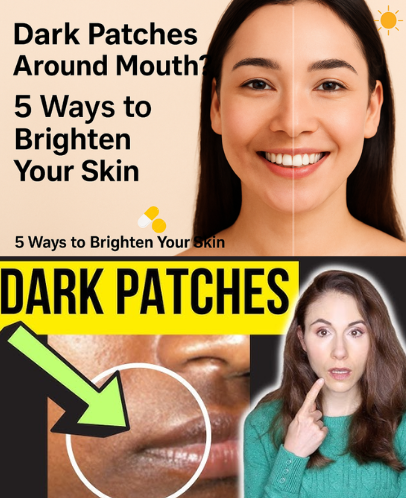
Dark patches around the mouth, also known as melasma or hyperpigmentation, are a common skin concern. They can affect people of all ages and skin types. These patches may appear on the upper lip, lower lip, chin, and nearby areas, resulting from increased pigmentation. Although they are not harmful, they can be distressing. Understanding their causes and effective treatments is key to managing them.
What Causes Dark Patches Around the Mouth?
Dark patches appear when melanin, the pigment responsible for skin color, becomes uneven or overproduced.
Sun Exposure
UV rays trigger melanin production to protect the skin. However, prolonged unprotected exposure can lead to excessive melanin in certain areas, resulting in hyperpigmentation.
Genetics
Genetic factors influence how melanocytes respond to triggers like hormones and sunlight. People with a family history of melasma are more likely to develop dark patches around the mouth.
Post-Inflammatory Hyperpigmentation
Skin trauma, injury, or inflammation can cause post-inflammatory hyperpigmentation. During healing, excess melanin may form, leaving the mouth area darker than surrounding skin.
Vitamin Deficiency
Deficiencies in vitamin B12 or vitamin D can contribute to pigmentation. Research shows low vitamin D levels are linked to melasma, especially when sunlight exposure is minimal.
5 Most Effective Ways to Treat Dark Patches Around the Mouth
Sun Protection
Daily use of a broad-spectrum sunscreen rated PA++++ and SPF 50 is crucial. It protects against UV rays, prevents further darkening, promotes an even skin tone, and reduces the risk of recurrence. Sunscreens containing titanium dioxide or zinc oxide scatter UV radiation and prevent new pigmentation. Ingredients like Aloe Vera extract and Caprylic Capric Triglyceride can help lighten existing patches.
Video : Darkening around mouth | causes | treatment | Dermatologist | Dr. Aanchal Panth
Topical Treatments
Certain skincare ingredients reduce melanin production and brighten the skin.
Vitamin C inhibits tyrosinase, the enzyme involved in melanin production, while promoting collagen and fading existing dark spots.
Alpha Arbutin targets excess melanin and reduces hyperpigmentation.
Niacinamide controls melanin transfer from melanocytes to skin cells, preventing further darkening.
Licorice Root Extract protects against oxidative stress and disperses melanin, reducing the visibility of dark patches.
White curcumin helps prevent new dark spots and treats hyperpigmentation effectively.
Retinoids
Retinoids, derivatives of vitamin A, regulate cell turnover, exfoliate the skin, and stimulate collagen production. They enhance the effectiveness of topical treatments, inhibit melanin production, and promote the growth of new, healthier skin cells, gradually reducing dark patches.
Laser Treatments for Hyperpigmentation
Lasers use focused light to break down excess melanin.
Intense Pulsed Light (IPL) emits broad-spectrum light that targets melanin and hemoglobin, improving overall skin texture.
Q-Switched Lasers deliver high-energy pulses that break down melanin in targeted areas, effective for stubborn dark spots.
Chemical Peels for Hyperpigmentation
Chemical peels, such as Glycolic Acid Peels and TCA Peels, promote the growth of healthier skin cells. They penetrate deep, accelerate cell turnover, and effectively reduce stubborn hyperpigmentation.
Video : How To Get rid Of Dark Lips And Pigmentation
Takeaway
Treating dark patches around the mouth requires a holistic approach that includes sun protection, effective topical products, professional treatments, and consistent skincare habits. With patience and proper guidance, you can reduce dark patches and achieve a more radiant, even complexion.


